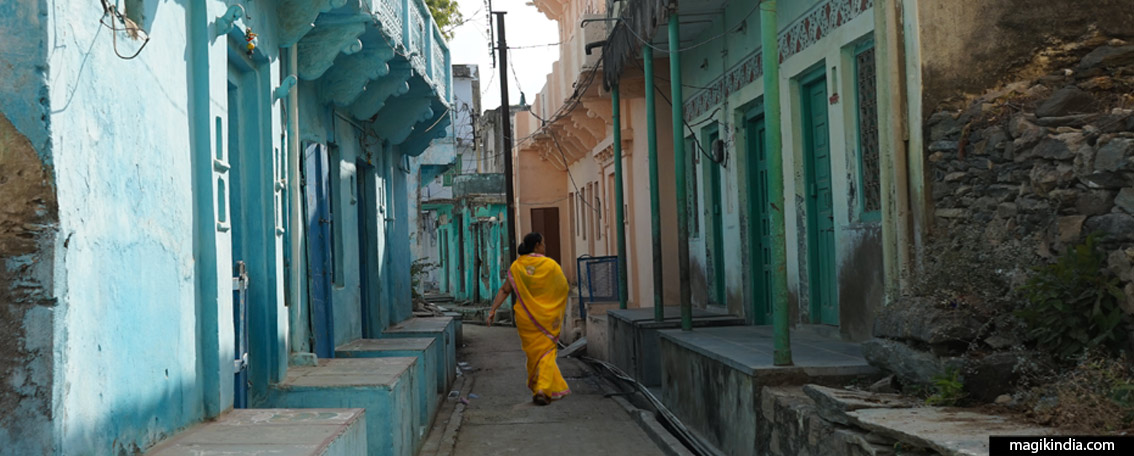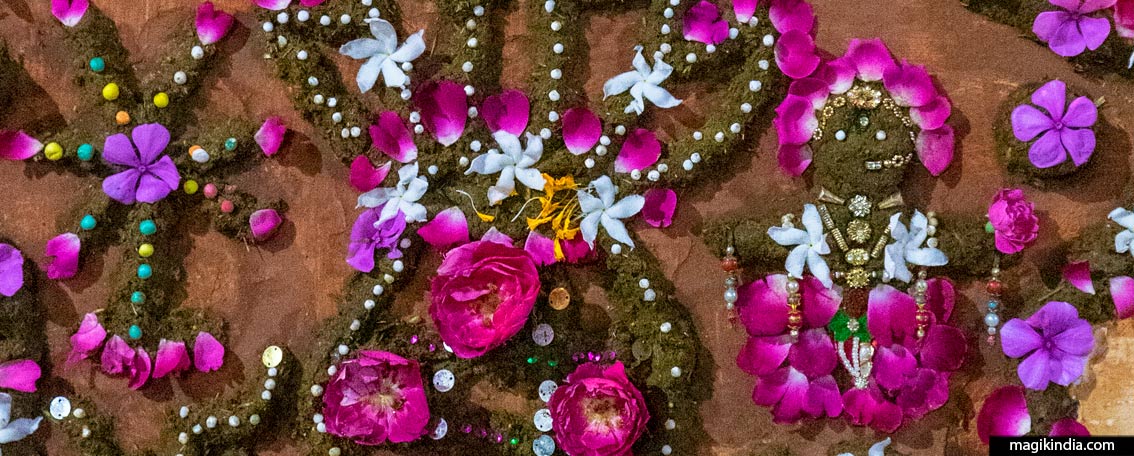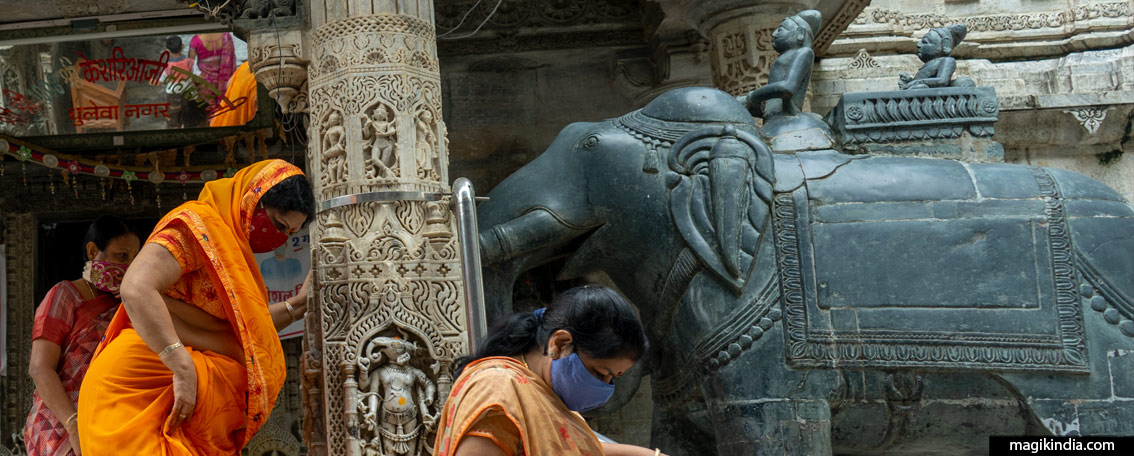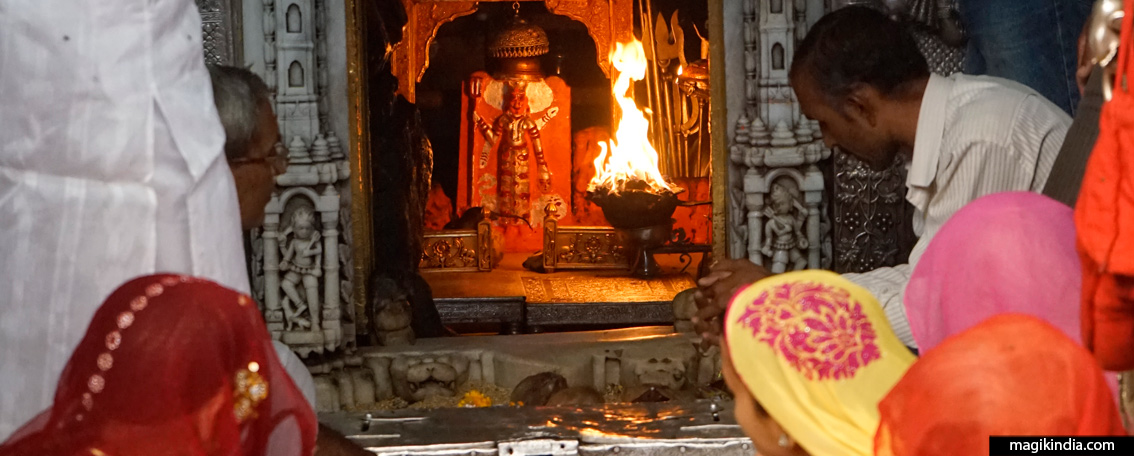
Eight unusual temples in India
The author of the slogan “Incredible India!” have been well-inspired. The slogan indeed applies to all aspects of Indian culture and Hindu temples are no exception. Some of these sanctuaries are known for the incredible technicality of their construction – Madurai, Ellora or Tanjore – to name but a few, others for their unusual cults imbued with legends and popular beliefs.
1 – Bullet Baba (Pali, Rajasthan)
The temple of the motorcycle-deity
Bullet Baba or “Om Banna” is a relatively well-known temple among tourists, as it is on the “National Highway 65”, the main road connecting Udaipur to Jodhpur in Rajasthan.
The particularity of this temple: the deity is a motorcycle! Or more exactly, a 350 CC Royal Enfield Bullet, hence the name of the temple.
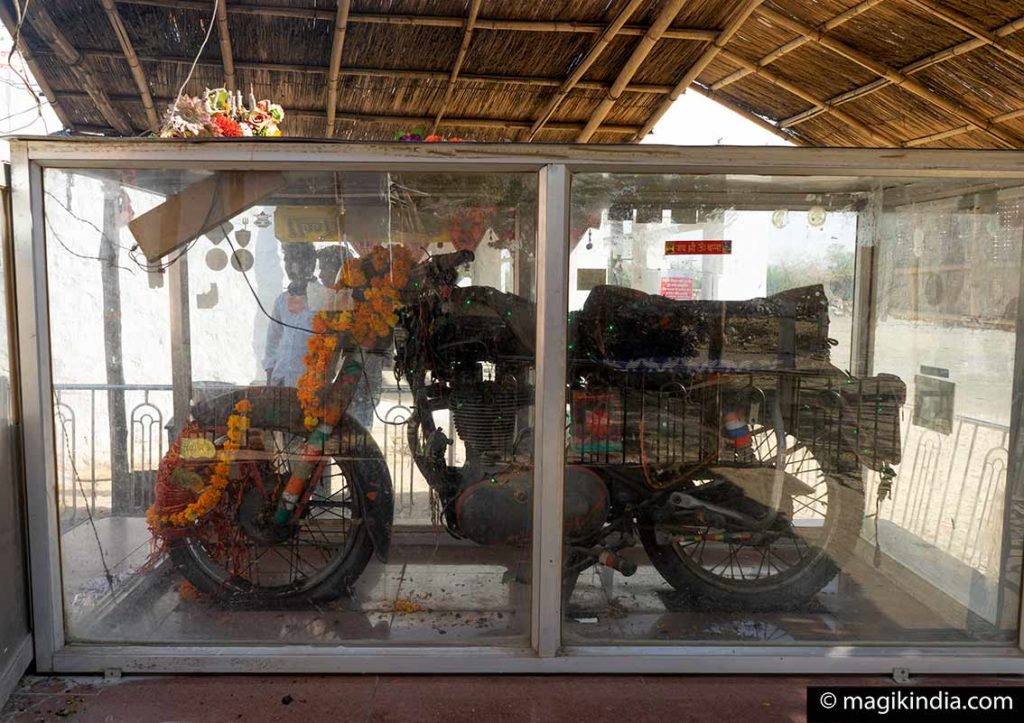
The story goes that in 1991, a young man named Om Singh Rathore (Om Banna) was traveling to the town of Chotila on his motorbike when he hit a tree and was killed instantly. After the accident, the motorbike was taken to the nearby police station, but it moved again towards the accident site, and this, several times in a row.
When the villagers heard of this miracle, they built a temple on the very spot of the accident.
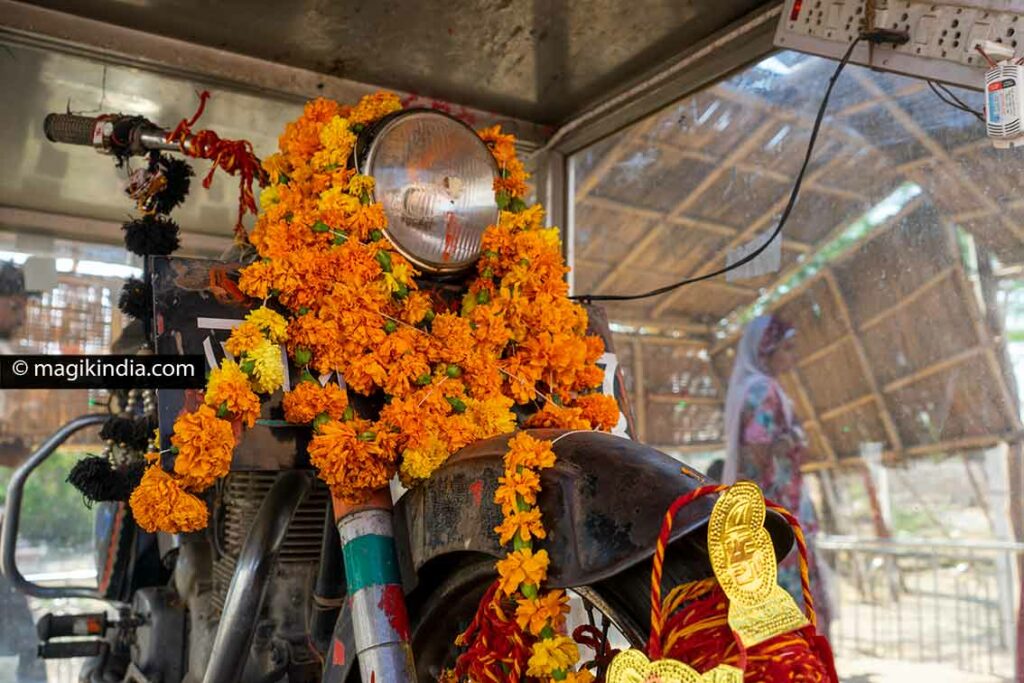
Every day, hundreds of passers-by stop to bow down to the motorcycle-deity that is believed to offer protection to travellers. They offer it garlands of flowers and bottles of alcohol (yes, that’s quite common in northern India) to ask for its blessing.
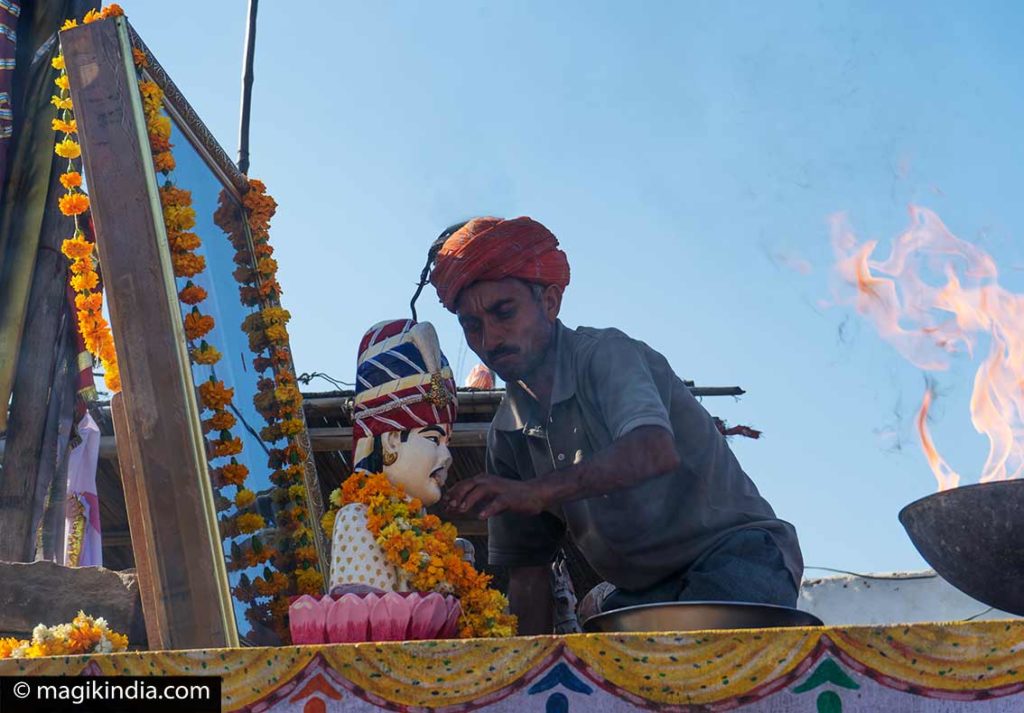
2 – Karni Mata, Deshnok (Bikaner, Rajasthan)
The temple of the rats
Sensitive souls, scroll quickly to temple #3 or rather #4 as #3 may be just as disturbing!
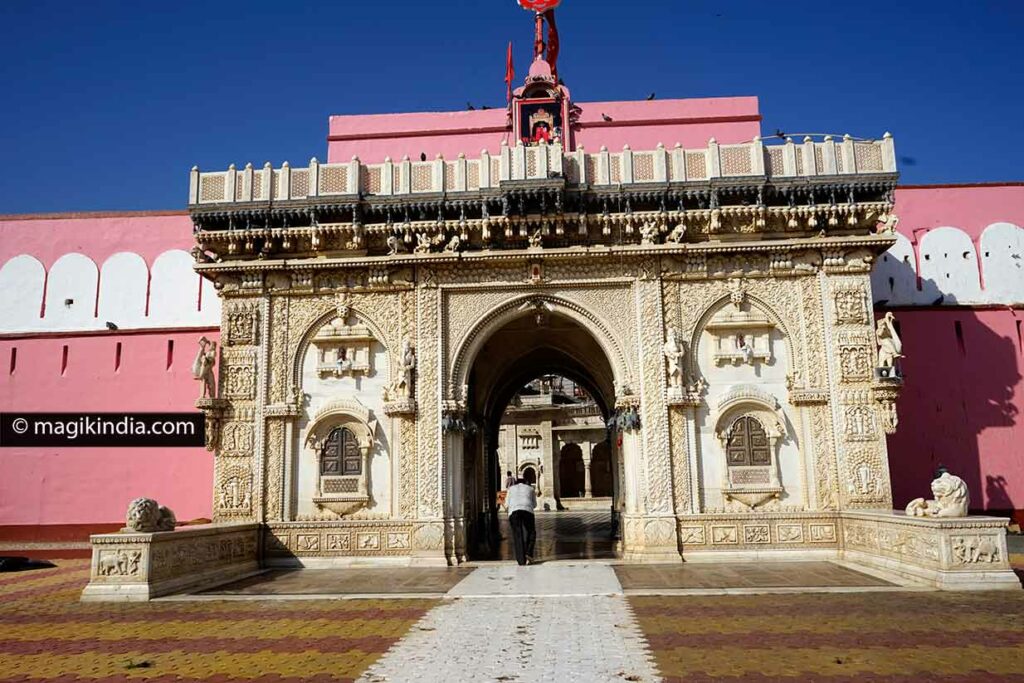
The temple of Karni Mata, located 30 km from Bikaner in the city of Deshnoke (Rajasthan) owes its international fame to the thousands of rats that inhabit it. It is said that there are more than 20,000 rats living peacefully on the food offerings given by the faithful.
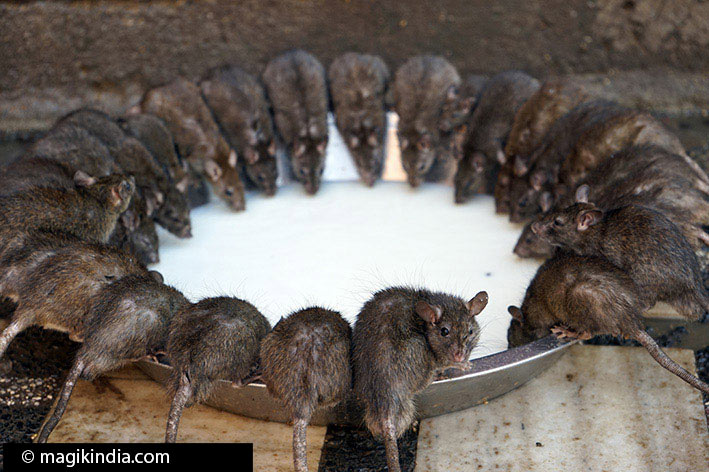
According to a local legend, Karni, a 15th century mystical woman and the incarnation of the Goddess Durga, implored the god Yama (the god of the death) to resurrect the eldest son of one of her storytellers. Yama refused at first, then finally agreed and allowed Karni Mata to bring back among her own not only the soul of the dead son of the storyteller, but also that of all the other storytellers and poets – members of the Charan community – on condition that they reincarnate into rats.

The black rats, known as “kabbas” or “little children”, are fed of treats as well as milk and cereal in large metal dishes on which they perch. Devotees have a custom of bringing back leftover food from rats as it is considered as a prasad (holy food).
Among these black rats, there are said to be 6 white rats considered the most sacred as they are believed to be the reincarnations of Karni Mata herself and her family.

3 – Mehandipur Balaji, Dausa (Rajasthan)
The exorcist temple
Also located in Rajasthan, Mehandipur Balaji, is another unique temple where Brahmin priests practice exorcism rites to free a person who claims to be under the influence of black magic or of an evil spirit. It is one of the last shrines in India where these healing rituals are conducted in public.
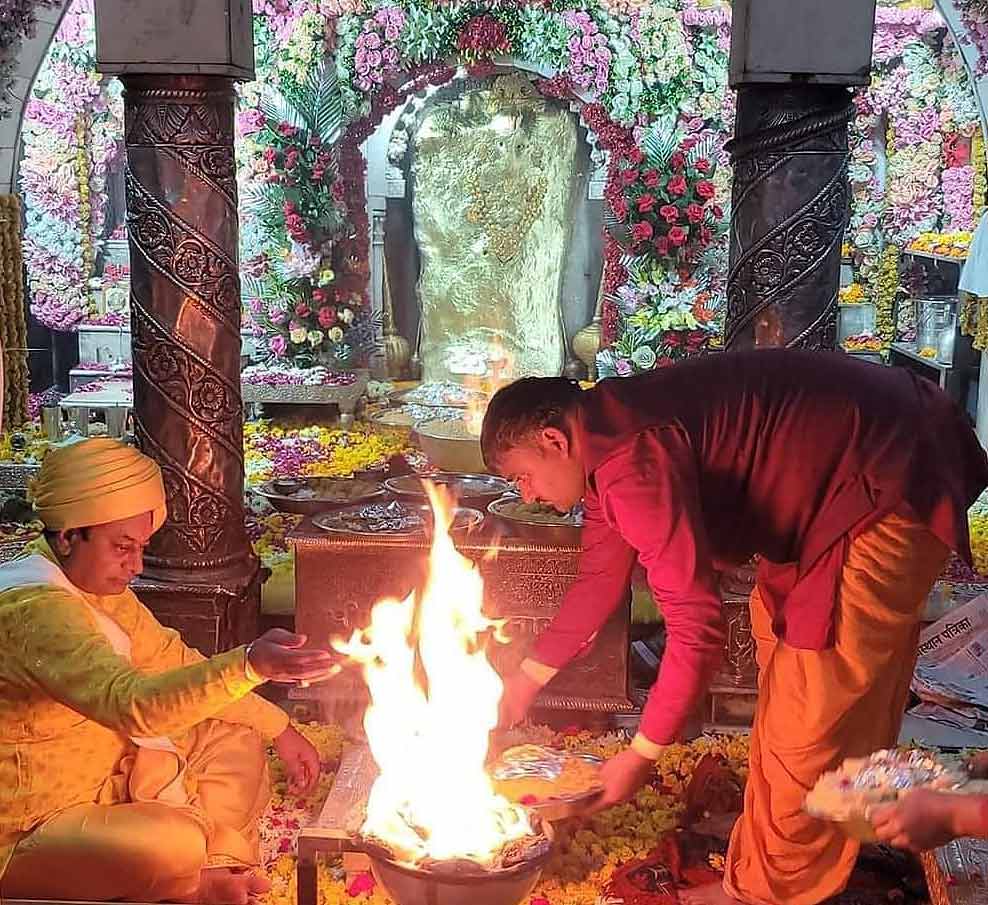
For Westerners, it is a temple that can be disturbing, for we see people shouting, writhing, rolling on the ground or banging their heads against the walls.
For Indians, this temple is a must-see in Rajasthan. Thousands of devotees flock there every day (Saturdays and Tuesdays are the busiest ones) because, before being an exorcist temple, Mehandipur Balaji is a sanctuary dedicated to the monkey god Hanuman in his form of “Bala ” (child). Hanuman is known to be a “Sankat Mochan” i.e. one who eradicates pain, suffering and sorrow.
Devotees customarily give “Bhog” (offerings) of “Bondi ke Laddou” (round sweets made from gram flour) to Hanuman as well as rice mixed with black soybeans to Bhairav Baba, the deity who is known to destroy fear. These offerings are neither eaten in the temple nor taken home but thrown over the shoulder so as not to bring the spirits of temple home.
Similarly, the faithful leaving the temple, do not turn round because the evil spirits could take this as an invitation to inhabit their body.
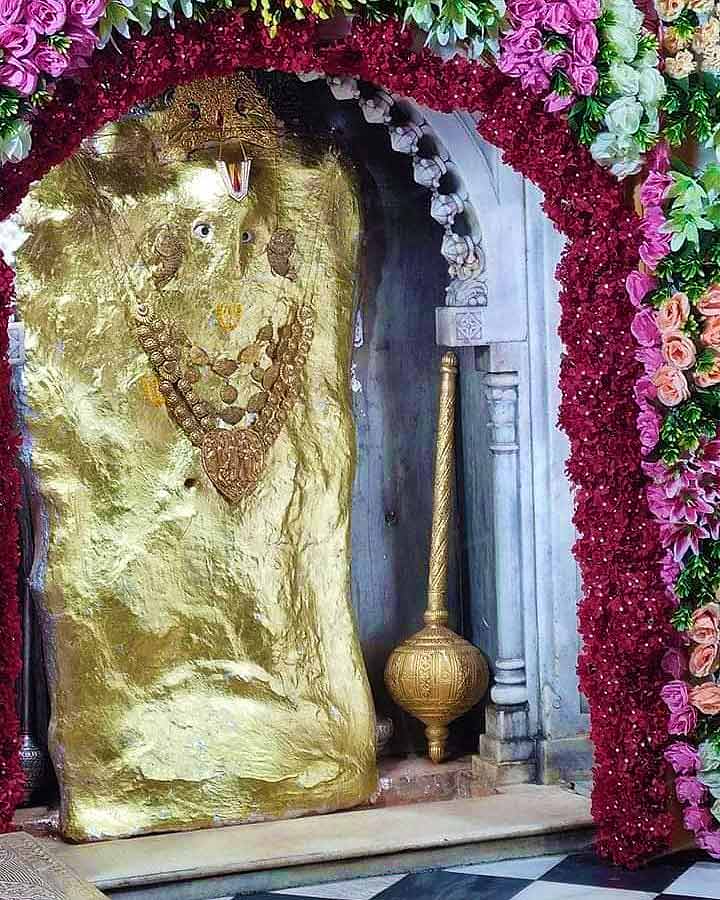
4 – Kamakhya Devi (Guhawati, Assam)
The temple where the menstruations are sacred
Kamakhya Devi, located atop Nilachal Hill in Guwahati in Assam, is one of India’s most revered temples. It is indeed one of the 51 Shakti Peethas.
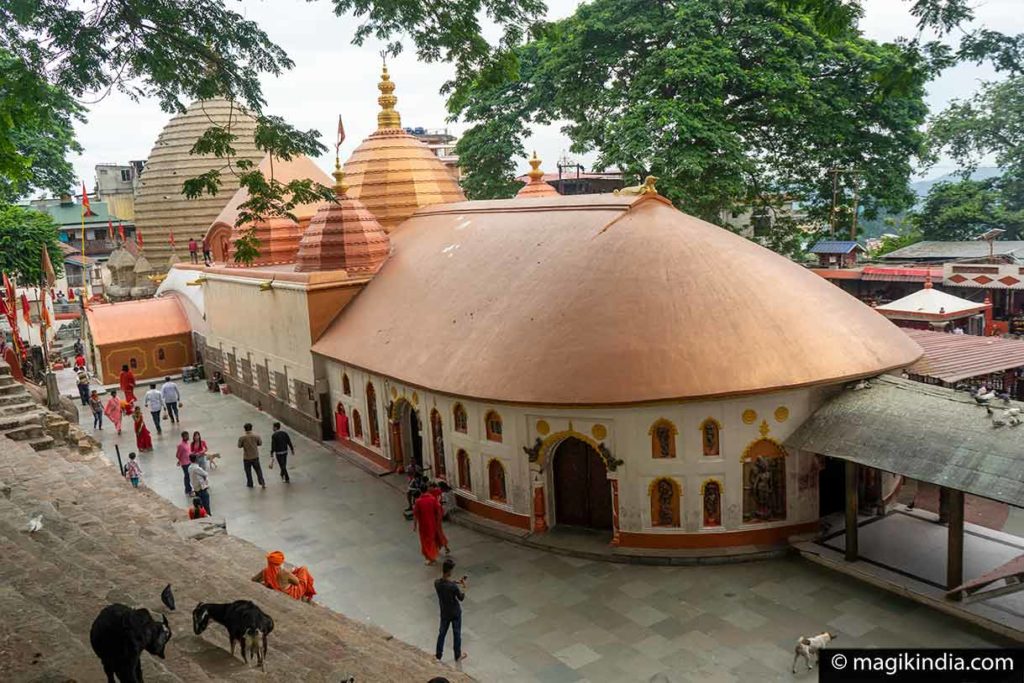
Here we do not venerate a statue but a crack in the rock which represents the “yoni” (vagina) of Devi Sati, the spouse of the god Shiva. This yoni is revered as the goddess Kamakhya herself. A trickle of water, coming from a perennial underground source, flows at this very place.
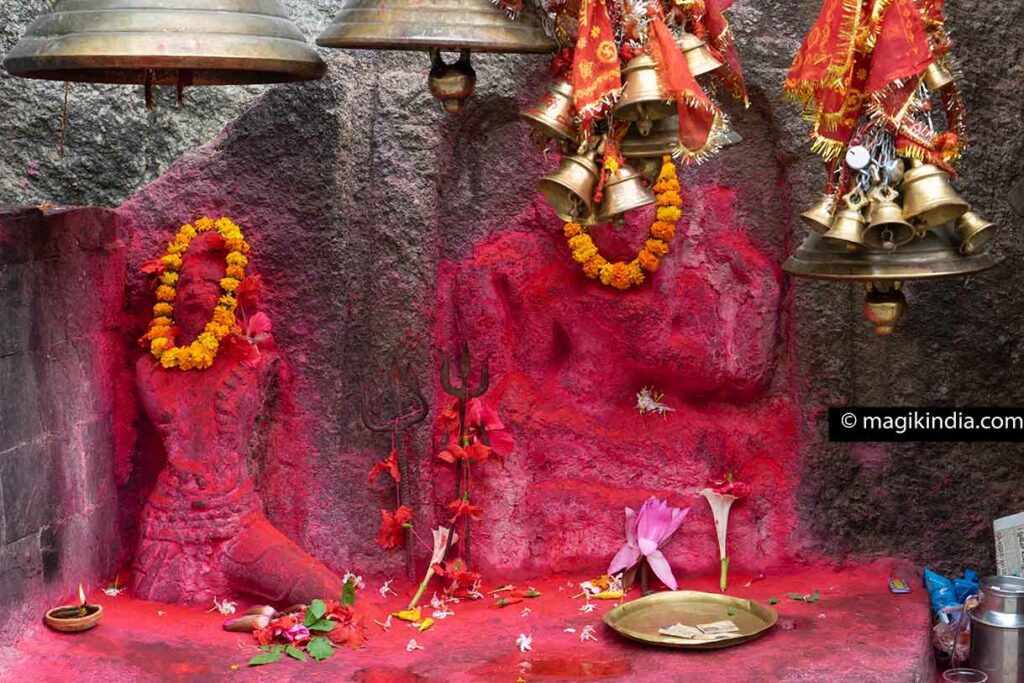
Every year during the monsoon, the goddess Kamakhya has her period and the temple is then closed for three days. The underground water reservoir then go red.
It is at this same time that the Ambubachi Mela festival takes place in the temple. Devotees believe that during monsoon rains, the creative and nurturing menstruation power of Mother Earth becomes accessible to devotees and brings abundance and bliss. On the fourth and last day of the festival, devotees are offered a piece of as red cloth as “Prasad” used to cover the yoni during menstruation days.
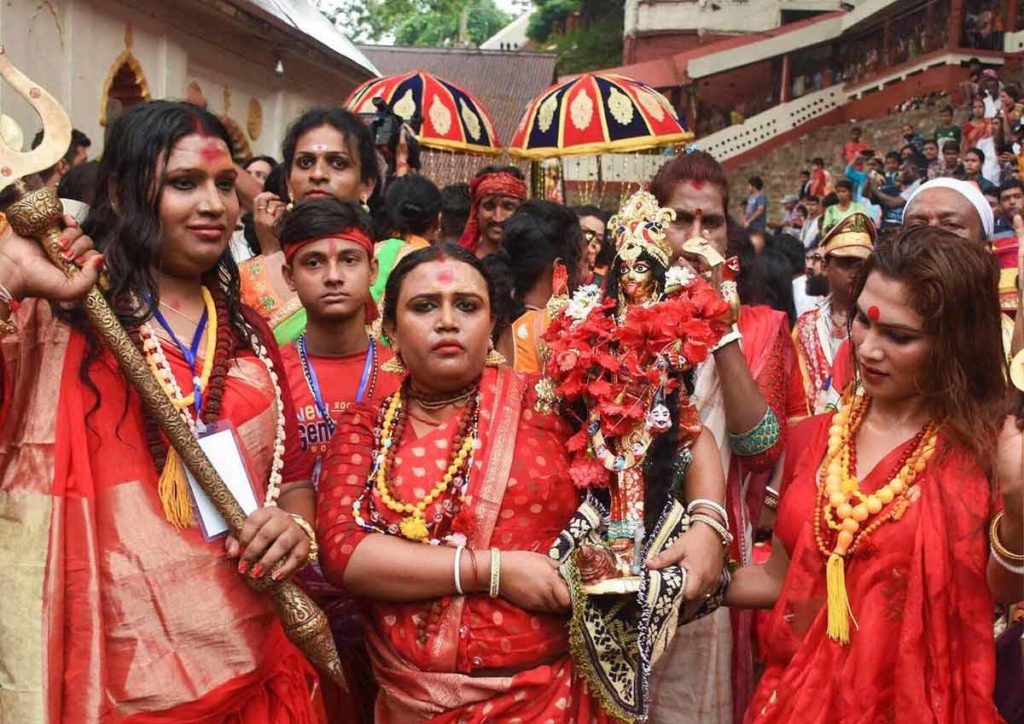
5 – Chausath Yogini (Odisha & Madhya Pradesh)
The temples of the 64 yoginis
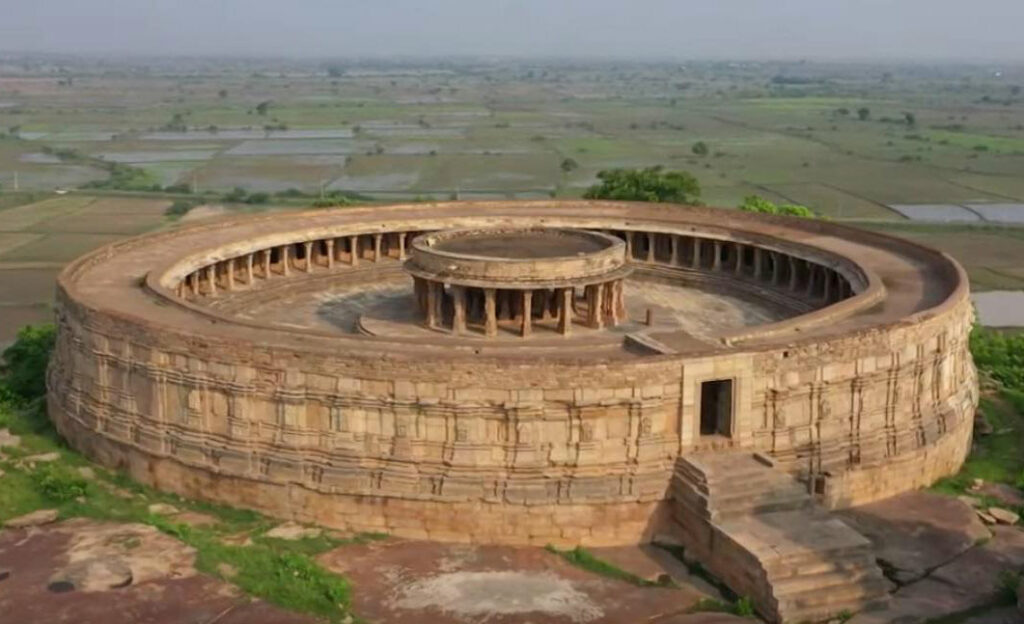
Among the multitude of Hindu temples that dot India, those of the 64 yoginis (Chausath Yogini), which can be counted on the fingers of one hand, occupy a very special place. These sanctuaries, dedicated to tantric worship and to the “Shakti”, the universal creative force, still remain an enigma and, surprisingly, very few theses have been developed on this subject.
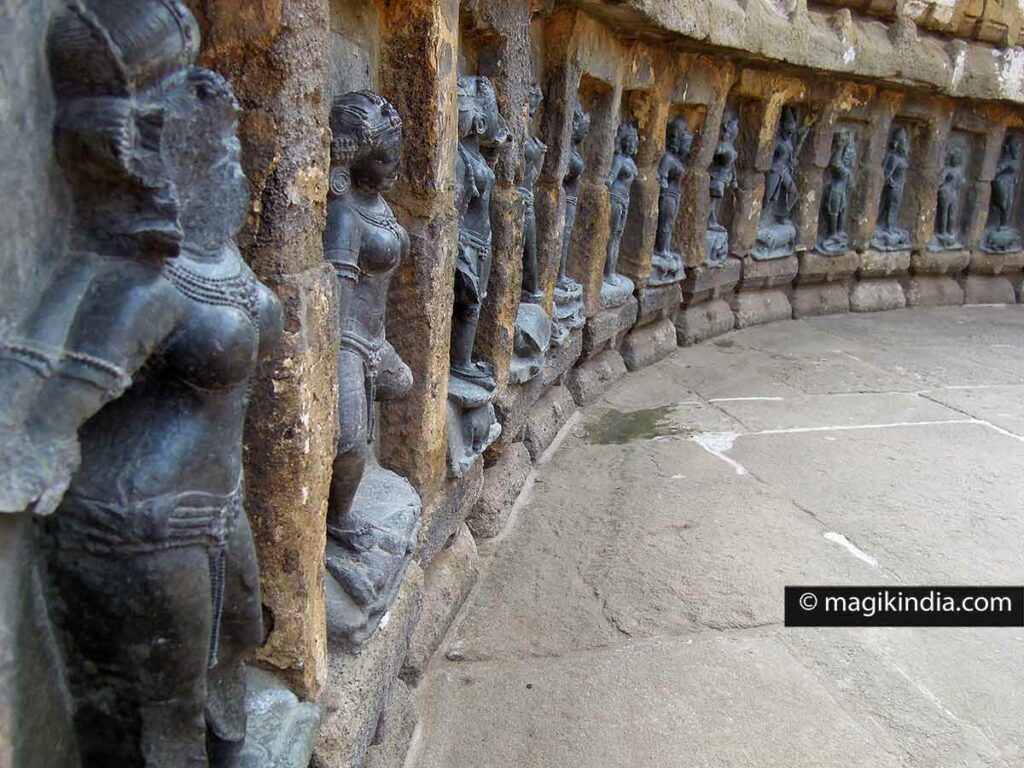
Yogini refer to female entities who have acquired superior faculties (siddhi) through intense “sadhanas” (spiritual practices). It is said that these “super women” having obtained total control of the body and the mind had supernatural powers such as the ability to levitate or leave their bodies at will.
The still standing temples of Yoginis are five in number, two in Odisha and three in the state of Madhya Pradesh.
READ MORE ABOUT THE 64 YOGINIS6 – Nidhivan Temple, Vrindavan
The temple of the Raas Lila
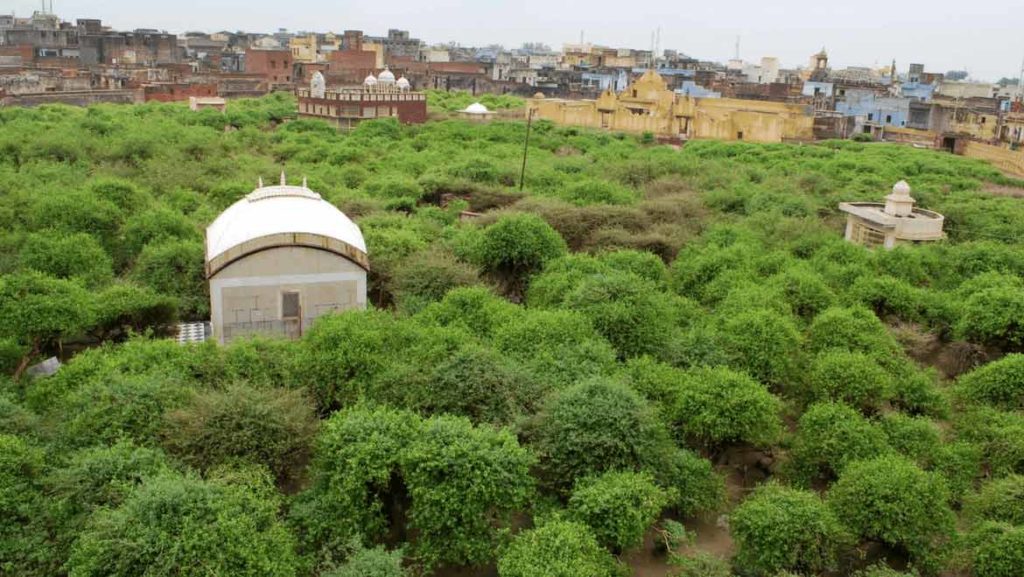
Located in the heart of Vrindavan, one of the towns dedicated to the worship of the Hindu god Krishna, the Nidhivan temple is certainly one of the most mysterious in India. It is located in a dense forest made up of intertwined shrubs where hordes of monkeys have taken up residence.
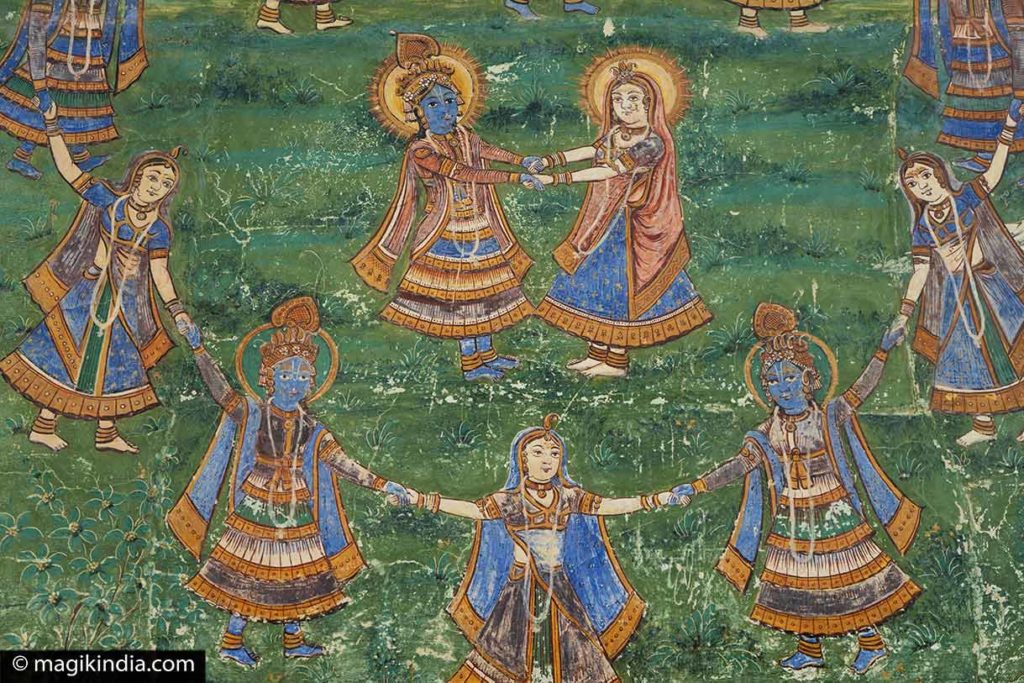
Legend has it that every night, Krishna and his beloved Radha come here to dance the Raas Lila, the “dance of divine love” with the gopis (shepherdess) who then turn into a shrub when the sun rises. The branches of these shrubs are said to grow downward to show their respect to the divine couple.

This is why after the arati (offering of flames) at 8 p.m., no one should remain in the periphery of the temple or attend the dance of Radha and Krishna as they can loose their sight…
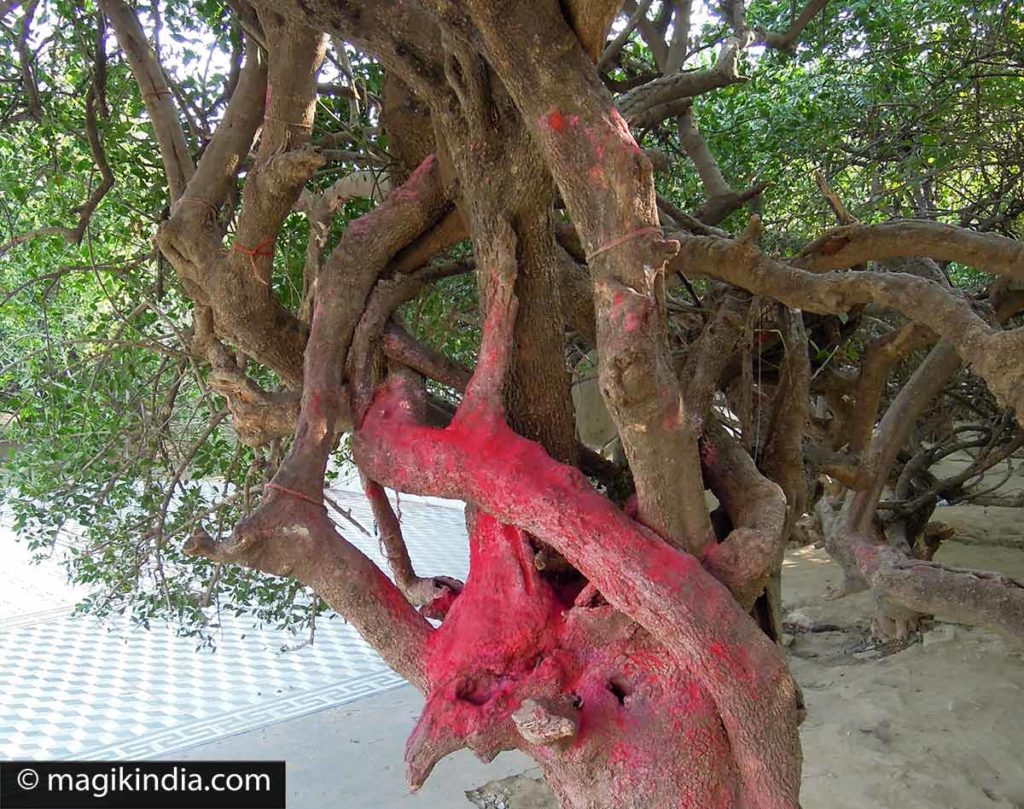
7 – Stambheshwar Mahadev, Gujarat
The Temple of the Tides
Lying on the shores of the Arabian Sea, near Vadodara in Gujarat, Stambheshwar Mahadev is a special sanctuary that appears and disappears according to the tides.

The legend has it that the temple was built by the god Kartikeya, one of the sons of Shiva and Parvati, to wash away the murder of the demon Tarakasura, great devotee of Lord Shiva. Lord Vishnu suggested to Kartikeya to erect a Shiva-lingam on the very spot where he struck down Tarakasura. This is how the temple of Stambheshwar was created and that Kartikeya was absolved of his sins.
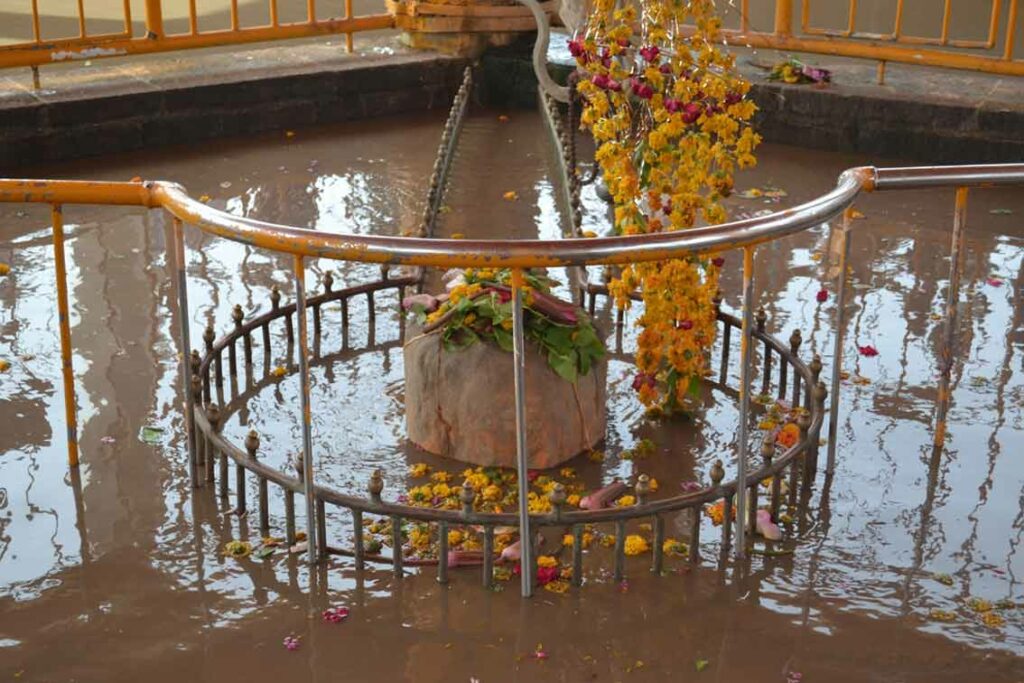
To receive the Darshan of the Lingam, one must ascertain the frequencies and times of the tides. For this, you can visit the temple’s website: stambheshwarmahadev.com.
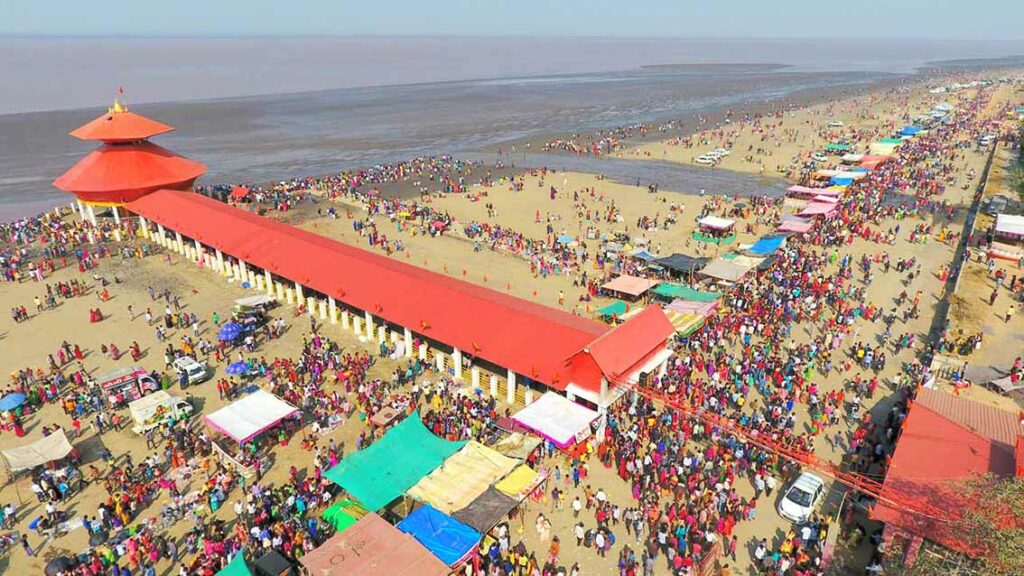
8 – Achaleshwar, Mount Abu (Rajasthan)
The Temple of Shiva’s Big Toe Footprint
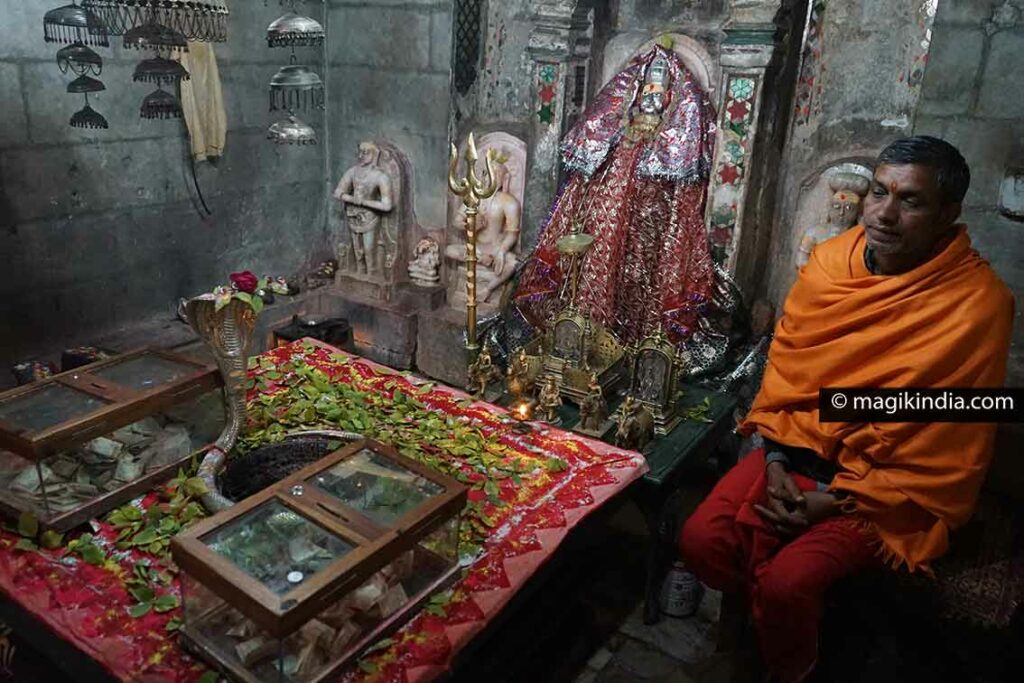
Achaleshwar is located eight kilometers from Mount Abu, the only hill station in Rajasthan.
There are few remains of the ancient city of the Parmar kings except for its Achaleshwar temple, one of the most mysterious I have ever seen.
The shrine, although dedicated to Shiva, does not house a Lingam which is the traditional symbol of the god, but instead there is a pit.

Legend has it that in order to stabilize Mount Abu, Lord Shiva had to extend his right leg from Varanasi to this temple. He left the imprint of his right big toe that matches the current pit. They say it goes down to the center of the earth…
KNOW MORE ABOUT MOUNT ABU

